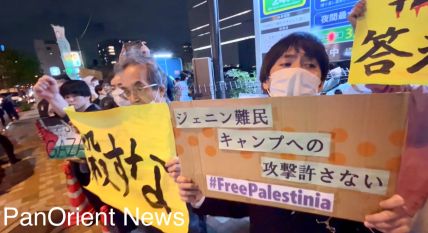|
|
Energy
Sendai Nuclear Restart Will not End Nuclear Crisis: Greenpeace Warns
Tuesday, August 11, 2015

Tokyo— (PanOrient News) The restart of the Sendai nuclear reactor today will not reverse the terminal decline of Japan's nuclear industry, given all nine Japanese nuclear utilities are faced with insurmountable safety issues at their nuclear power plants together with mounting political, public and legal challenges, Greenpeace Japan warned.
“Even though one nuclear reactor has restarted, the nuclear industry is still fighting for its very survival in Japan. The lengths to which safety issues have been ignored in the Nuclear Regulation Authority’s (NRA) review process for the Sendai plant restart shows just how desperate the nuclear industry and their government allies are,” Mamoru Sekiguchi, energy campaigner at Greenpeace Japan said in a statement.
“Rather than a nuclear renaissance, much of Japan’s aging nuclear reactor fleet will never restart. Prime Minister Abe and the nuclear regulator are risking Japan’s safety for an energy source that will likely fail to provide the electricity the nation will need in the years ahead,” Sekiguchi said.
Greenpeace Japan’s analysis released in April 2015, showed that nuclear power in 2030 will likely provide only between 2-8 per cent of Japan's electricity generation, compared with the announced government target of 22 percent.
The Sendai unit 1 reactor has not operated since May 2011. The statement said NRA "has failed" to apply robust safety measures to the Sendai reactor; including that the NRA approved an assessment by Kyushu Electric Power, which excluded major seismic risks at the Sendai plant and violated the NRA’s own post- Regarding Fukushima safety guidelines; the statement said an analysis commissioned by Greenpeace Japan in February showed that the NRA also accepted a flawed volcano risk analysis from Kyushu Electric Power for the active volcano Mt. Sakurajima, located only 50km from the reactor site;
Furthermore, the NRA "failed" to require Kyushu Electric to complete its ageing related operational safety plan before passing the reactor review.
Greenpeace also noted that public opposition in Kagoshima prefecture reflected deep concern "over the failure" to have effective emergency planning measures, including plans for the evacuation of elderly and those in hospital.
Japan’s 43 remaining nuclear reactors have multiple safety issues, including seismic faults located at reactor sites and ageing related problems, which together with public opposition are likely to force many reactors to be permanently shutdown. Looming on the horizon is the liberalization of the electricity market in 2016, which will expose large nuclear utilities to competition, including from Japan's fast expanding renewable energy industry.
“The NRA has admitted that it can’t even guarantee safety if the nuclear reactor restarts. Yet, here we are four years since the multiple reactor meltdowns at Fukushima Daiichi with woefully inadequate emergency planning, and risk assessments based on faulty seismic and volcanic data. We are in a tragic situation where the NRA is pandering to an increasingly desperate nuclear industry, rather than putting the lives and livelihoods of the people living in the shadow of the reactors first, ” Kendra Ulrich, senior global energy campaigner with Greenpeace Japan said noting that, “the government’s current energy policy will not secure even the inadequate reductions in carbon emissions announced recently. The first step to a safe and secure energy future is for Mr. Abe to abandon his obsession with trying to save the nuclear industry, and allow the innovative renewable energy sector to grow. The people of Japan deserve to be able to choose clean, safe renewables.”
Nuclear power is not needed to secure deep carbon reductions, according the statement. It said, renewable energy growth in Japan has been explosive during the last four years. 24GW of solar energy has been installed as of April 2015, with a further 58GW approved for installation. Japan's nuclear fleet prior to the Fukushima Daiichi accident had an installed capacity of 45GW. By 2014 investments for new solar photovoltaics had risen to 2.6 trillion yen (US$25 billion) for 8GW.
© PanOrient News All Rights Reserved.
|
|

